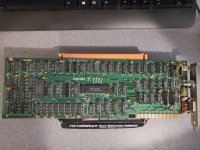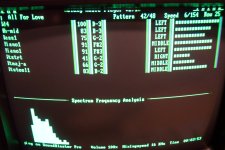maelstrm
Experienced Member
Hello Federation,
I have a few questions regarding MDA / CGA / EGA cards and monitors. I'm soon going to receive an IBM 5153 monitor and want to make sure I connect it safely. I have (what I think is) an EGA card. Just want to make sure of a few things:

Just want to make sure of everything before I blow something up.
I have a few questions regarding MDA / CGA / EGA cards and monitors. I'm soon going to receive an IBM 5153 monitor and want to make sure I connect it safely. I have (what I think is) an EGA card. Just want to make sure of a few things:
- Is it safe to connect the 5153 (a CGA class monitor) to an EGA card?
- Am I correct in understanding that connecting an MDA card to a 5153 or 5154 could damage the monitor?
- Can anyone confirm that the card below is an EGA card. FCC ID is E5Y6L9MG-150 / Model (?) ET-1000 Rev. 1D. I did mistakenly (but very briefly) connect the below card to an MDA monitor. I saw it was out of sync and immediately removed the cable. Luckily no damage.


Just want to make sure of everything before I blow something up.


